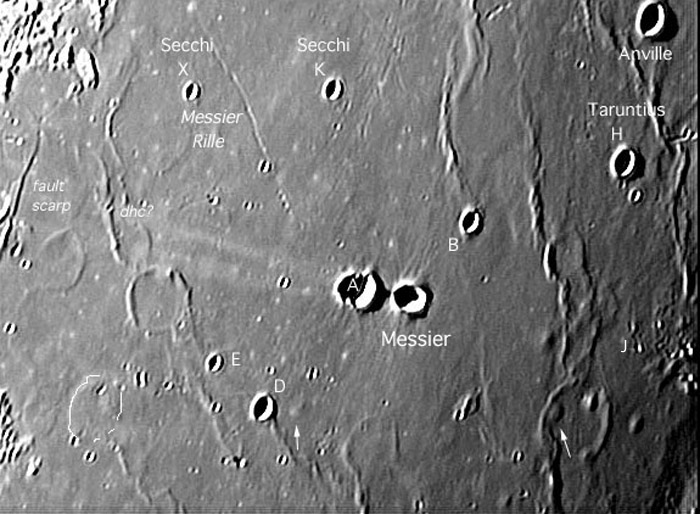Difference between revisions of "March 2, 2009"
| (7 intermediate revisions by the same user not shown) | |||
| Line 1: | Line 1: | ||
__NOTOC__ | __NOTOC__ | ||
=1.50°S, 52.36°E= | =1.50°S, 52.36°E= | ||
| − | + | <!-- Start of content --> | |
| − | + | <!-- ws:start:WikiTextHeadingRule:2:<h1> --> | |
<!-- ws:start:WikiTextLocalImageRule:8:<img src="/file/view/LPOD-Mar2-09.jpg/60265994/LPOD-Mar2-09.jpg" alt="" title="" /> -->[[File:LPOD-Mar2-09.jpg|LPOD-Mar2-09.jpg]]<!-- ws:end:WikiTextLocalImageRule:8 --><br /> | <!-- ws:start:WikiTextLocalImageRule:8:<img src="/file/view/LPOD-Mar2-09.jpg/60265994/LPOD-Mar2-09.jpg" alt="" title="" /> -->[[File:LPOD-Mar2-09.jpg|LPOD-Mar2-09.jpg]]<!-- ws:end:WikiTextLocalImageRule:8 --><br /> | ||
| − | <em>image by Gerardo Sbarufatti, published originally in [ | + | <em>image by Gerardo Sbarufatti, published originally in [[October_11,_2004|Oct 11, 2004 LPOD]]</em><br /> |
<br /> | <br /> | ||
| − | The pioneering Chinese lunar orbiter [ | + | The pioneering Chinese lunar orbiter [[November_27,_2007|crashed]] onto the lunar surface at 0813 GMT on March 1, 2009. Its impact was in northeastern Mare Fecunditatis near the small crater Messier J (bottom right margin of image). There was apparently no advance warning and thus no chance for observers to look for an impact flash or plume. This would have been more than just an exciting event because imaging a collisional flash from a projectile of known mass, velocity and impact point would have provided a calibration for the ongoing imaging of meteorite impact flashes on the Moon, and possibly be of use to planners preparing for the impact of LCROSS in a polar crater. The Chang'e-1 mission demonstrated that China can build and successfully fly a spacecraft to the Moon, but the paucity of scientific results, so far at least, makes me wonder if it was just an engineering test. I hope the Chinese will ultimately release thousands of images, high resolution topographic charts and all the other data their instruments collected.<br /> |
<br /> | <br /> | ||
<em>[mailto:tychocrater@yahoo.com Chuck Wood]</em><br /> | <em>[mailto:tychocrater@yahoo.com Chuck Wood]</em><br /> | ||
| Line 15: | Line 15: | ||
<br /> | <br /> | ||
<strong>Related Links</strong><br /> | <strong>Related Links</strong><br /> | ||
| − | Rükl plate [ | + | Rükl plate [https://the-moon.us/wiki/Rükl_48 48]<br /> |
<br /> | <br /> | ||
| + | <p><b>Yesterday's LPOD:</b> [[March 1, 2009|When Worlds Don't Collide]] </p> | ||
| + | <p><b>Tomorrow's LPOD:</b> [[March 3, 2009|Moonworld]] </p> | ||
<hr /> | <hr /> | ||
| − | + | {{wiki/ArticleFooter}} | |
| − | |||
| − | |||
| − | |||
Latest revision as of 19:51, 18 August 2018
1.50°S, 52.36°E

image by Gerardo Sbarufatti, published originally in Oct 11, 2004 LPOD
The pioneering Chinese lunar orbiter crashed onto the lunar surface at 0813 GMT on March 1, 2009. Its impact was in northeastern Mare Fecunditatis near the small crater Messier J (bottom right margin of image). There was apparently no advance warning and thus no chance for observers to look for an impact flash or plume. This would have been more than just an exciting event because imaging a collisional flash from a projectile of known mass, velocity and impact point would have provided a calibration for the ongoing imaging of meteorite impact flashes on the Moon, and possibly be of use to planners preparing for the impact of LCROSS in a polar crater. The Chang'e-1 mission demonstrated that China can build and successfully fly a spacecraft to the Moon, but the paucity of scientific results, so far at least, makes me wonder if it was just an engineering test. I hope the Chinese will ultimately release thousands of images, high resolution topographic charts and all the other data their instruments collected.
Chuck Wood
UPDATE Here is a video of the spotless control room and animation of the Chang'e-1 crash.
Technical Details
Oct 2, 2004, 00:07 UT. Celestron 8 + 2X barlow + 5,500 um IR cutout filter + Phillips Vesta Pro, 200 sec AVI at 10 fps, 400 best frames used.
Related Links
Rükl plate 48
Yesterday's LPOD: When Worlds Don't Collide
Tomorrow's LPOD: Moonworld
COMMENTS?
Register, Log in, and join in the comments.



